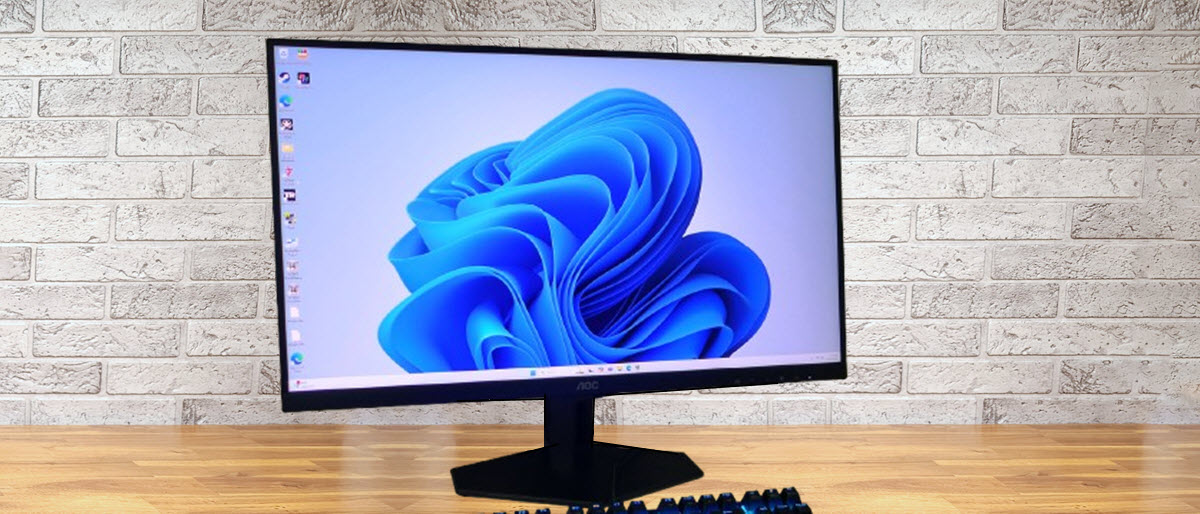Why you can trust Tom's Hardware
To read about our monitor tests in-depth, please check out Display Testing Explained: How We Test PC Monitors. We cover brightness and contrast testing on page two.
Uncalibrated – Maximum Backlight Level
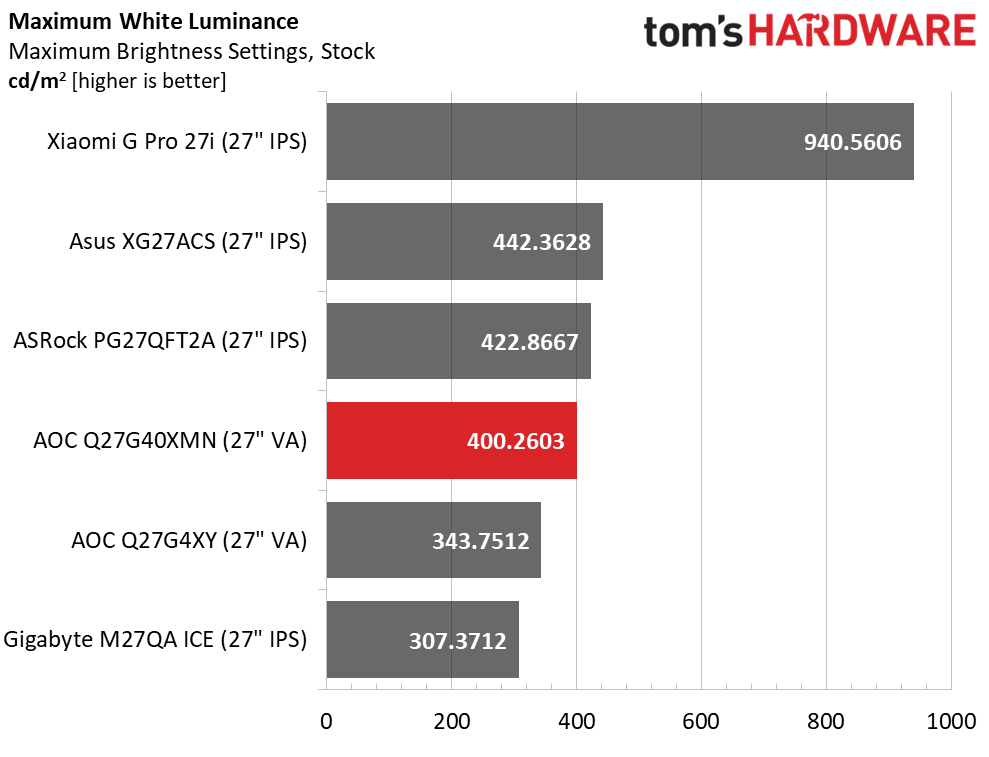
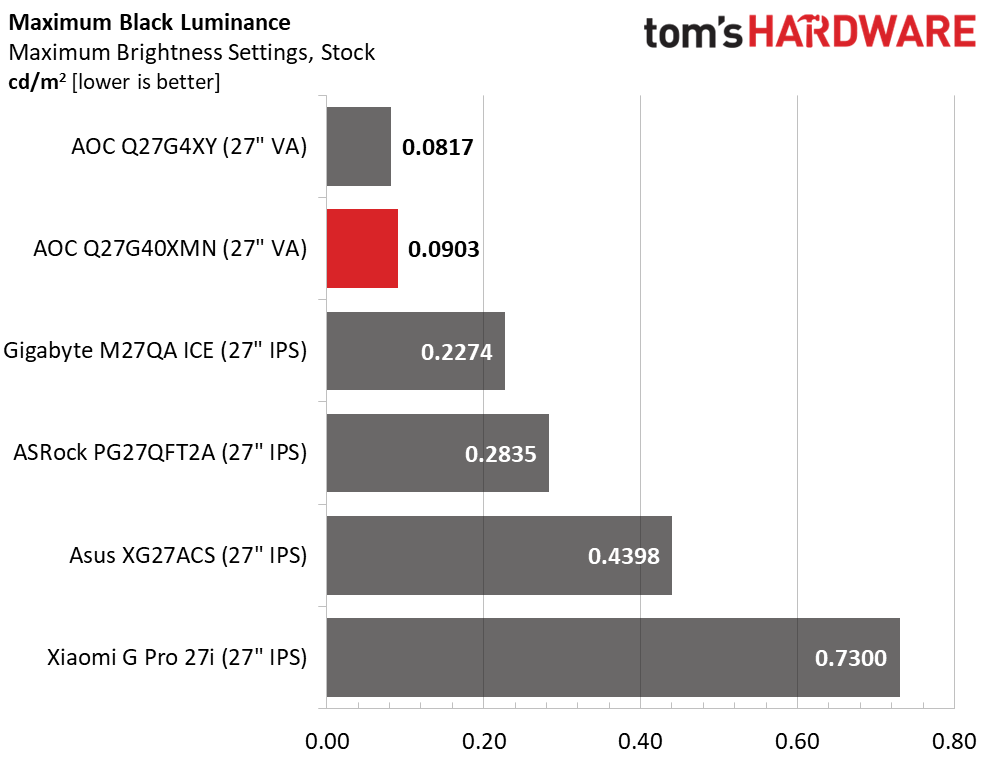
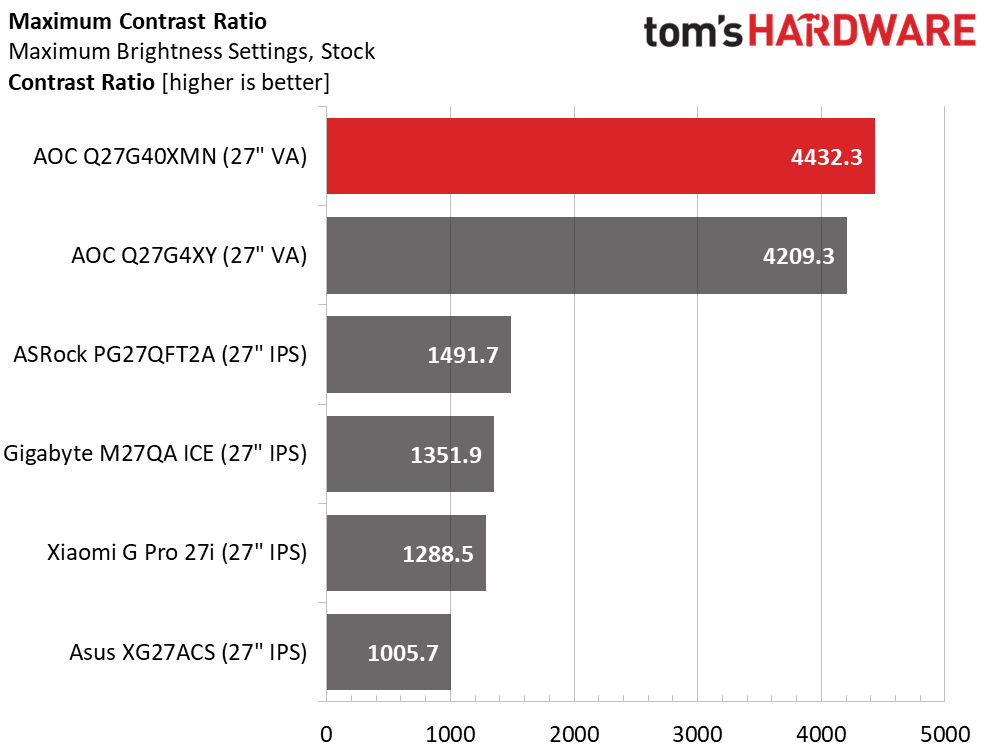
The Q27G40XMN and the Xiaomi G Pro 27i are the only two Mini LED screens here. The latter cranks the light juice all the time for a searing 940 nits at maximum brightness in SDR mode. The Q27G40XMN tops out at 400 nits with local dimming disabled and 510 nits with it enabled. Interestingly, full field patterns measured brighter than windows. Either way, there is more than enough light output for any usage environment. The two VA screens have a distinct black level advantage, which makes their native contrast quite a bit higher at 4,209.3:1 for the Q27G4XY and 4,432.3:1 for our review subject, the Q27G40XMN.
After Calibration to 200 nits
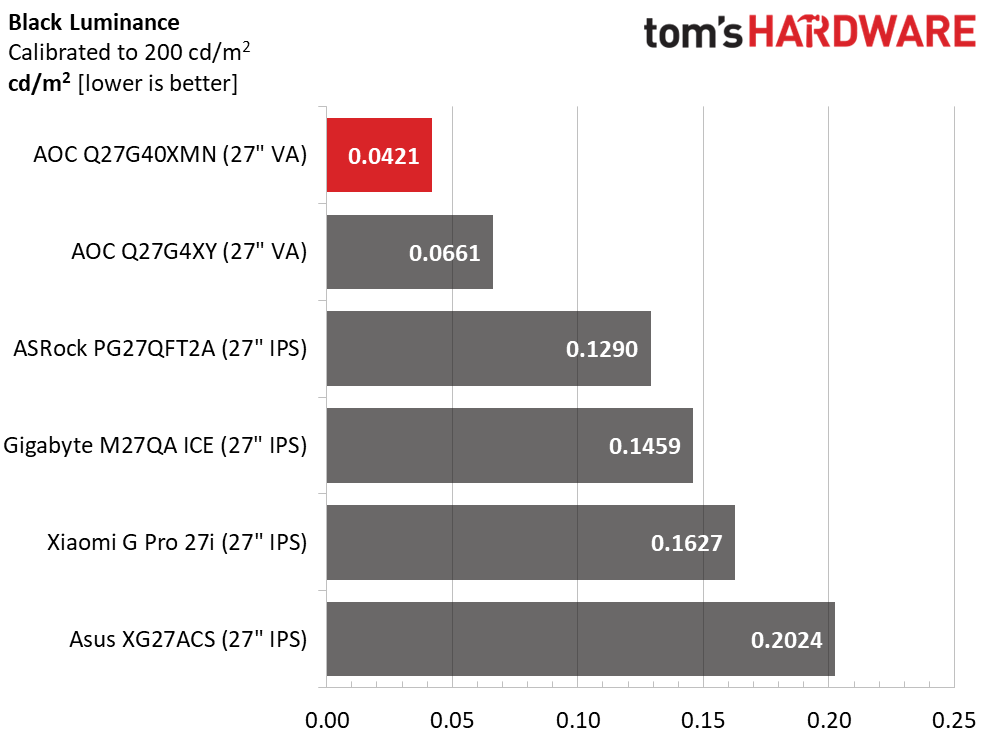
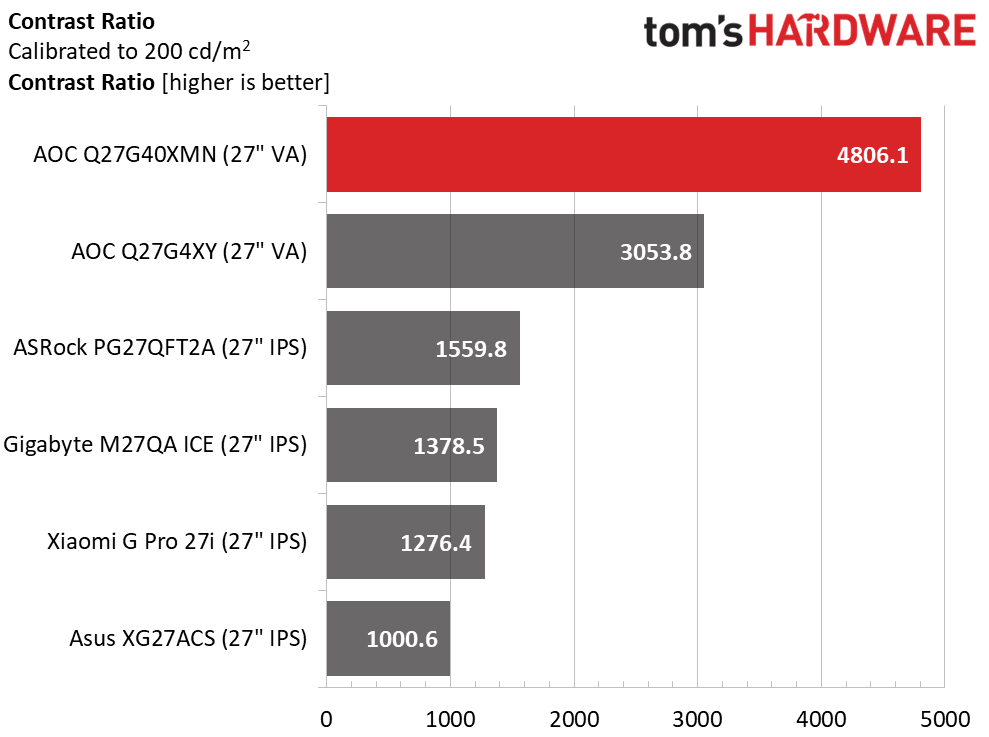
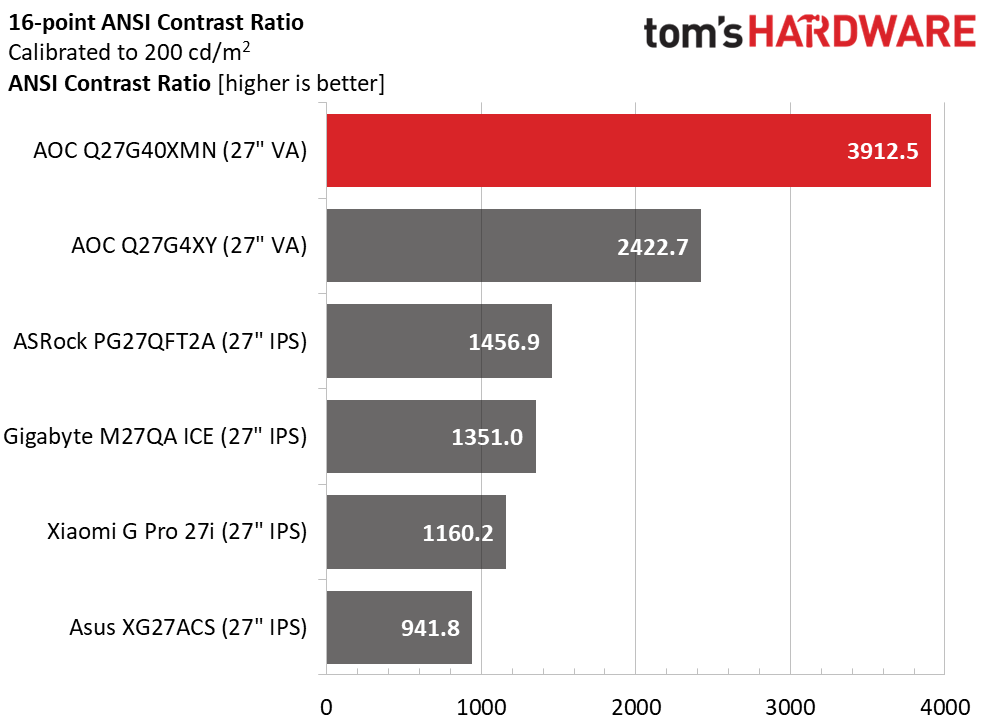
My calibration changed the Q27G40XMN’s gamma tracking, which had the upside of increasing contrast to 4,806.1:1. This is with local dimming turned off, making this the panel’s native value. With class-leading black levels, this is top-shelf performance. The Q27G40XMN also wins the ANSI contest by a wide margin with 3,912.5:1, one of the highest values I’ve recorded in this test from an LCD panel.
Test Takeaway: The Q27G40XMN has more dynamic range and better black levels than most LCD monitors I’ve tested. Adding the local dimming takes contrast over 33,000:1. This display stands out in that it has effective dynamic contrast that’s accessible to both SDR and HDR content.
MORE: Best Gaming Monitors
MORE: How We Test PC Monitors
MORE: How to Buy a PC Monitor
Get Tom's Hardware's best news and in-depth reviews, straight to your inbox.
Current page: Brightness and Contrast
Prev Page Response, Input Lag, Viewing Angles and Uniformity Next Page Grayscale, Gamma and Color
Christian Eberle is a Contributing Editor for Tom's Hardware US. He's a veteran reviewer of A/V equipment, specializing in monitors. Christian began his obsession with tech when he built his first PC in 1991, a 286 running DOS 3.0 at a blazing 12MHz. In 2006, he undertook training from the Imaging Science Foundation in video calibration and testing and thus started a passion for precise imaging that persists to this day. He is also a professional musician with a degree from the New England Conservatory as a classical bassoonist which he used to good effect as a performer with the West Point Army Band from 1987 to 2013. He enjoys watching movies and listening to high-end audio in his custom-built home theater and can be seen riding trails near his home on a race-ready ICE VTX recumbent trike. Christian enjoys the endless summer in Florida where he lives with his wife and Chihuahua and plays with orchestras around the state.
-
Amdlova Mini led is a game changer on LCD display... With the Samsung 90D the Blacks are amazing. I'am waiting to Oled become cheaper and less prone to burn in.Reply
But 270$ on a monitor it's a big no! -
powpowboom Not a single mention of VRR (Variable Refresh Rate) flicker in that article?? I just saw a video on Rtings and all oled and mini led monitors are prone to VRR flicker because it is inherent in the technology. The AOC is a "gaming" monitor so freesync (or gsync) will be enabled for most gamers. VRR flicker is horrid and is what prevents me from going to OLED. More awareness needs to be raised about thisReply
